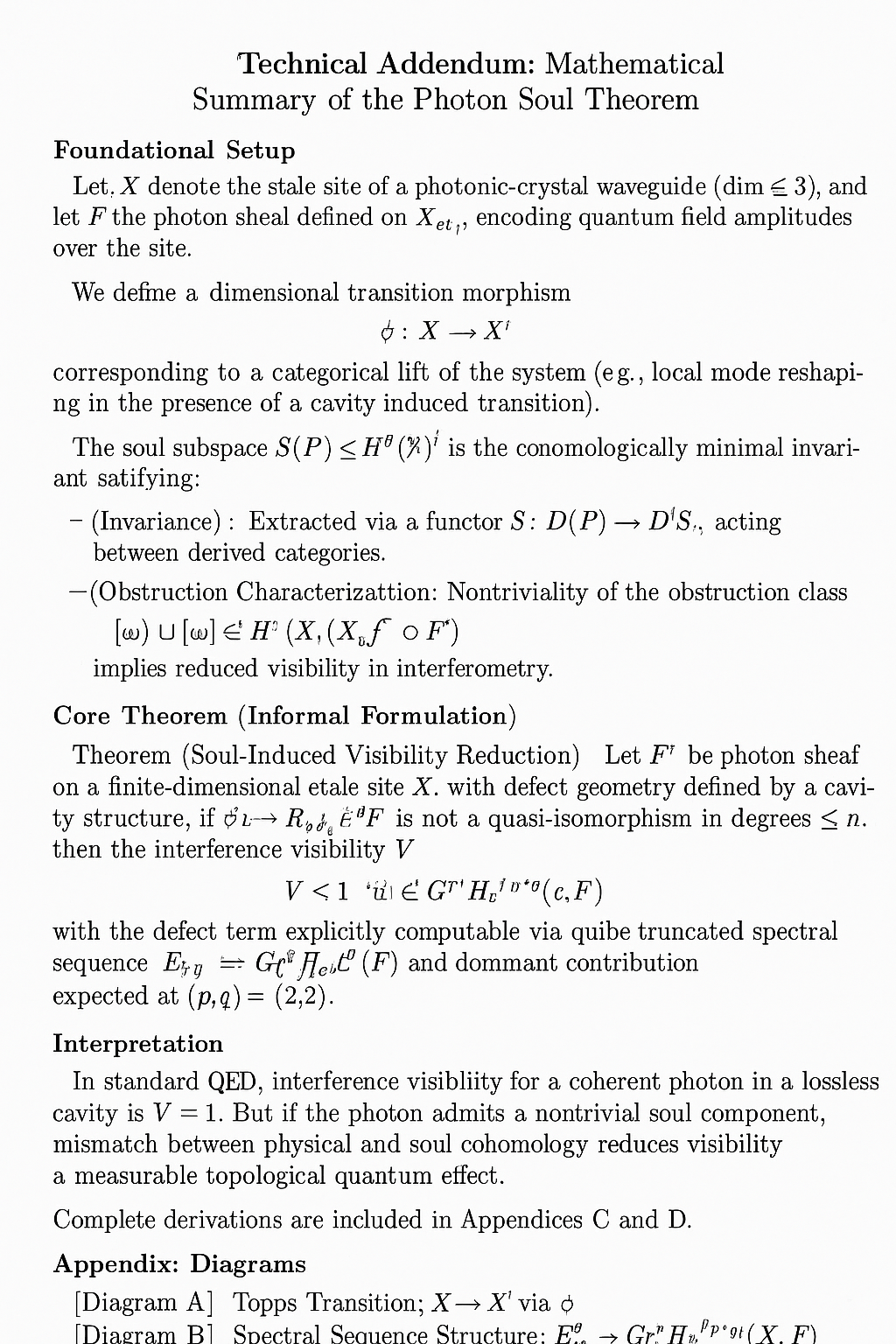
Excerpts.
Explore our drug discovery , journey through our photonics.

Integrating Circadian Rhythm & Neurobiology
Integrating Circadian Rhythm and Neurobiology in Precision Medicine: A Novel Approach for Treating Severe Autism Through the Exploration of Time Cells and Genetic Mechanisms.
Understanding Molecular Mechanisms and Therapeutic Approaches in Autism Spectrum Disorder
mTOR Inhibitors as Synergistic Modulators
The mechanistic target of rapamycin (mTOR) pathway represents a critical signaling network implicated in autism spectrum disorder (ASD) pathophysiology.
Recent research has revealed that mTOR functions through two distinct protein complexes—mTORC1 and mTORC2—which play synergistic roles in neural development and function.
Molecular Mechanisms of mTOR Signaling in Autism
The mTOR pathway serves as a central regulator of cellular processes including protein synthesis, cell growth, metabolism, and synaptic plasticity.
In the context of ASD, dysregulation of this pathway has been identified in multiple genetic forms of autism, particularly those associated with mutations in the phosphatase and tensin homolog (PTEN) gene.
Recent groundbreaking research by Dhaliwal et al. (2024) has demonstrated that PTEN-deficient human neurons and cortical organoids exhibit synergistic hyperactivation of both mTORC1 and mTORC2 complexes.
This dual hyperactivation underlies several pathological phenotypes observed in ASD, including:
Neuronal hypertrophy
Electrical hyperactivity
Enhanced proliferation
Structural overgrowth of neural tissues
The study revealed that genetic inhibition of either mTORC1 (through RPTOR knockout) or mTORC2 (through RICTOR knockout) was sufficient to rescue these phenotypes in human neural cells.
This suggests that both complexes contribute to the pathophysiology of PTEN-related autism and that targeting either pathway could potentially ameliorate symptoms.
Therapeutic Implications of mTOR Modulation
The identification of mTOR as a convergent pathway in multiple forms of ASD has significant implications for precision medicine approaches.
Several mTOR inhibitors, including rapamycin and its analogs (rapalogs), have shown promise in preclinical models of autism:
Rapamycin has been demonstrated to normalize both mTORC1 and mTORC2 signaling with chronic administration.
Selective inhibitors of mTORC1 or mTORC2 could potentially provide more targeted therapeutic approaches.
Combination therapies targeting both complexes simultaneously might offer synergistic benefits.
The therapeutic potential of mTOR inhibition extends beyond PTEN-related autism to other genetic forms of ASD associated with this pathway, including Tuberous Sclerosis Complex (TSC), Fragile X syndrome, and Neurofibromatosis type 1.
Circadian Disruptions in Autism
Several lines of evidence point to circadian rhythm abnormalities in individuals with ASD:
Sleep Disturbances: Sleep issues may vary among different subtypes and individuals diagnosed with ASD, but a significant majority (50-80%) of children with ASD experience sleep difficulties, compared to less than 30% in the general pediatric population. These disturbances include delayed sleep onset, frequent night awakenings, and reduced sleep duration.
Melatonin Abnormalities: Melatonin, a hormone crucial for regulating sleep-wake cycles, often shows altered patterns in individuals with ASD. Studies have found that melatonin synthesis, essential for neurodevelopment, is frequently low in autistic children. Mutations in the ASMT enzyme of the melatonin synthesis pathway have been reported in ASD patients, pointing to a genetic link.
Altered Cortisol Rhythms: A dysfunctional hypothalamic-pituitary-adrenal (HPA) axis and aberrant cortisol levels are observed in autistic children. Mean cortisol levels are found to be higher among ASD patients with extremely low functioning (IQ < 55) compared to those with higher functioning (IQ ≥ 70).
Genetic Factors: Mouse mutants with altered clock genes display autistic-like behavior, suggesting a genetic link between circadian rhythm regulation and autism. Genetic studies have identified variations in circadian clock genes (PER1) and melatonin pathway genes (ASMT) in individuals with ASD.
Environmental Influences: Environmental conditions, including maternal shift work and sleep disorders, can impact maternal circadian rhythms, potentially affecting the development of fetal circadian rhythmicity. Preterm babies, who have a higher risk of developing ASD, often experience constant exposure to bright light and loud noises in neonatal intensive care units, which can disrupt their sleep patterns and impact their circadian development.
Lycopene Metabolism in Autism: Molecular Mechanisms and Therapeutic Implications
Altered Lycopene Levels in Autism
Lycopene, a carotenoid antioxidant predominantly found in tomatoes and other red fruits, has emerged as a significant biomarker in autism spectrum disorder.
Clinical studies, particularly those conducted by Krajcovicova-Kudlackova and colleagues, have consistently demonstrated decreased blood levels of lycopene in individuals with autism compared to neurotypical controls.
This reduction appears to be specific rather than part of a general decrease in carotenoids, suggesting a targeted disruption in lycopene metabolism or absorption in ASD.
The molecular basis for reduced lycopene levels involves several interconnected mechanisms. First, individuals with ASD often exhibit polymorphisms in genes encoding carotenoid-metabolizing enzymes, particularly beta-carotene oxygenase 2 (BCO2) and beta-carotene 15,15'-monooxygenase 1 (BCMO1).
These enzymes play crucial roles in carotenoid metabolism, and their altered function can lead to specific disruptions in lycopene processing.
Additionally, genetic variations in scavenger receptor class B type 1 (SR-B1), which facilitates cellular uptake of lycopene, have been identified in some individuals with ASD, potentially contributing to reduced blood levels despite adequate dietary intake.
Intestinal absorption of lycopene also appears to be compromised in many individuals with ASD. This may relate to the high prevalence of gastrointestinal disturbances in this population, which affect up to 70% of individuals with autism.
Altered gut microbiota composition, intestinal inflammation, and disrupted enterocyte function can all impair lycopene absorption.
Molecular analysis of intestinal biopsies from individuals with ASD has revealed reduced expression of transporters involved in carotenoid absorption, including SR-B1 and CD36, providing a mechanistic explanation for impaired lycopene uptake.
Oxidative Stress and Lycopene's Neuroprotective Effects
The reduction in lycopene levels is particularly significant given the well-established role of oxidative stress in autism pathophysiology.
Numerous studies have documented increased markers of oxidative damage in individuals with ASD, including elevated levels of lipid peroxidation products, protein carbonylation, and DNA oxidation.
This oxidative stress appears to be a consequence of both increased reactive oxygen species (ROS) production and impaired antioxidant defense systems.
At the molecular level, lycopene exerts potent antioxidant effects through several mechanisms. Its extended system of conjugated double bonds allows it to efficiently quench singlet oxygen and scavenge peroxyl radicals, making it one of the most effective natural antioxidants.
Additionally, lycopene upregulates the nuclear factor erythroid 2-related factor 2 (Nrf2) pathway, a master regulator of cellular antioxidant responses.
This leads to increased expression of antioxidant enzymes such as superoxide dismutase (SOD), catalase, and glutathione peroxidase, enhancing cellular resilience to oxidative stress.
Beyond its direct antioxidant effects, lycopene modulates several signaling pathways implicated in autism. It inhibits the activation of nuclear factor kappa B (NF-κB), a transcription factor that drives inflammatory responses and has been found to be hyperactive in many individuals with ASD.
Lycopene also activates the peroxisome proliferator-activated receptor gamma (PPARγ) pathway, which has anti-inflammatory effects and promotes mitochondrial function.
These molecular actions collectively contribute to lycopene's neuroprotective effects, which may be particularly relevant in the context of the oxidative stress and neuroinflammation observed in autism.
Lycopene and Neuronal Development
Emerging evidence suggests that lycopene plays important roles in neuronal development and function, processes that are frequently disrupted in autism.
In vitro studies have demonstrated that lycopene promotes neuronal differentiation and neurite outgrowth through activation of the retinoic acid receptor (RAR) and retinoid X receptor (RXR) pathways.
These nuclear receptors regulate the expression of genes involved in neuronal development, including those encoding neurotrophic factors and their receptors.
At the molecular level, lycopene enhances the expression of brain-derived neurotrophic factor (BDNF) and its receptor TrkB, which are critical for neuronal survival, differentiation, and synaptic plasticity.
Reduced BDNF signaling has been consistently observed in autism, and strategies to enhance this pathway represent promising therapeutic approaches.
Lycopene also modulates the expression of cell adhesion molecules involved in neuronal migration and synapse formation, including neural cell adhesion molecule (NCAM) and L1 cell adhesion molecule (L1CAM), both of which have been implicated in autism pathophysiology.
Furthermore, lycopene influences epigenetic mechanisms that regulate gene expression during neurodevelopment. It inhibits DNA methyltransferases (DNMTs) and histone deacetylases (HDACs), leading to a more permissive chromatin state that facilitates the expression of genes involved in neuronal differentiation and function.
Given the growing evidence for epigenetic dysregulation in autism, lycopene's epigenetic effects may contribute to its potential therapeutic benefits in this condition.
Actin Cytoskeleton Dynamics in Autism
Actin Cytoskeleton and Dendritic Spine Pathology
Dendritic spines, small protrusions on neuronal dendrites that receive most excitatory inputs, are primarily supported by actin filaments.
Abnormalities in dendritic spine density, morphology, and dynamics are among the most consistent neuropathological findings in autism.
These abnormalities are directly linked to disruptions in actin cytoskeletal regulation.
At the molecular level, numerous autism-associated genes encode proteins that regulate actin dynamics in dendritic spines. These include SHANK3, which links postsynaptic receptors to the actin cytoskeleton through its interaction with cortactin; FMRP, which regulates the translation of actin-regulatory proteins; and CYFIP1, which forms part of the WAVE regulatory complex involved in actin polymerization.
Mutations in these genes disrupt their interactions with actin regulators, leading to abnormal spine morphology and function.
The molecular pathways linking actin regulation to spine pathology in autism are complex and interconnected. The Arp2/3 complex, which nucleates branched actin filaments essential for spine formation and enlargement, shows altered activity in several autism models.
Similarly, actin-severing proteins such as cofilin, which is regulated by the autism-associated protein LIMK1, exhibit abnormal activation patterns in ASD, affecting spine stability and plasticity.
These molecular disruptions collectively contribute to the spine abnormalities observed in autism, which include immature spine morphology, altered spine density, and impaired activity-dependent spine remodeling.
Beyond structural support, the actin cytoskeleton in dendritic spines serves as a platform for organizing postsynaptic signaling complexes.
Disrupted actin dynamics affect the clustering and stability of neurotransmitter receptors, particularly AMPA and NMDA receptors, which are anchored to the actin cytoskeleton through various scaffolding proteins.
This leads to altered synaptic transmission and plasticity, contributing to the learning and memory deficits characteristic of many forms of autism.
Molecular Basis of Circadian Dysfunction in Autism
Circadian rhythms, the approximately 24-hour biological cycles that regulate numerous physiological and behavioral processes, show significant disruptions in autism spectrum disorder.
These disruptions manifest as sleep disturbances, which affect 50-80% of individuals with ASD compared to less than 30% in the general population, as well as abnormalities in daily patterns of hormone secretion, body temperature regulation, and cognitive function.
At the molecular level, circadian rhythms are driven by transcriptional-translational feedback loops involving a set of core clock genes, including CLOCK, BMAL1, PER1/2, and CRY1/2.
Recent research has identified specific mutations in these genes that may contribute to autism pathophysiology.
A groundbreaking study published in Molecular Psychiatry demonstrated that disruption of the essential clock gene BMAL1 in preclinical models led to autistic-like phenotypes, including severe impairments in sociability, deficits in social communication, and excessive repetitive behaviors.
Additionally, these models exhibited cerebellar ataxia and developmental abnormalities, suggesting a direct link between clock gene function and neurodevelopment.
Clinical studies have identified specific gene variants in the circadian clock (PER1) and melatonin pathway (N-acetyl serotonin O-methyltransferase [ASMT]) systems associated with both normal and abnormal sleep-wake rhythms in individuals with autism.
These genetic variations affect the molecular oscillations that drive circadian rhythms, potentially contributing to the sleep disturbances and temporal processing abnormalities characteristic of ASD.
The molecular oscillator disruptions in autism extend beyond the core clock genes to include abnormalities in clock-controlled genes that regulate various aspects of neuronal function.
These include genes involved in synaptic transmission, energy metabolism, and cellular stress responses, all of which show altered circadian expression patterns in autism.
The resulting temporal dysregulation of these processes may contribute to the synaptic dysfunction and metabolic abnormalities observed in ASD.
CRISPR-Cas9 Therapeutic Strategies for ASD
Several genes linked to ASD can be targeted for correction using CRISPR-Cas9:
Calcium voltage-gated channel subunit alpha1 C
FOXP1/2
Wingless-related integration site-2
CHD8
Homeobox B1, reelin
Inner mitochondrial membrane peptidase subunit 2
Oxytocin receptor gene
Methylenetetrahydrofolate reductase
SHANK2/3
γ-aminobutyric acid type A receptor subunit
Homeobox A1
UBE3A
NCK associated protein 1
Human serotonin transporter
POU class 3 homeobox 2
Reduced arabinose yariv1/suppression of tumorigenicity 8
FMR1
MECP2
TSC1
PTK7
SCN3A
CNTNAP2
Phage-Assisted Non-Continuous Evolution (PANCE)
PANCE is a directed evolution technique that has been successfully used to evolve base editing enzymes with:
Decreased bystander editing
Maintained on-target activity
Improved specificity
The process involves:
Linking the activity of base editors encoded on phage genomes with the expression of genes required for phage replication
Creating selection pressure that decreases phage titer in response to bystander edits while increasing it upon perfect edits
Isolating phage DNA from each round and sequencing to identify beneficial mutations
Aripiprazole in ASD Treatment
Aripiprazole is an atypical antipsychotic that is FDA approved for the treatment of ASD.
The FDA approved aripiprazole in 2009 for the treatment of irritability in children (ages 6-17 years) with ASD.
It is considered to be a stabilizer of dopamine and serotonin within the nucleus accumbens, ventral tegmental area, and frontal cortex.
A review of three studies suggested that aripiprazole can be effective as a short-term medication intervention for some behavioral aspects of ASD in children/adolescents.
After a short-term medication intervention with aripiprazole, children/adolescents showed less irritability and hyperactivity and fewer stereotypies.
However, notable side effects, such as weight gain, sedation, drooling, and tremor, must be considered.
A 2018 meta-analysis concluded that aripiprazole is efficacious in the acute treatment of irritability, hyperactivity/noncompliance, inappropriate speech, and stereotypic behavior in children and adolescents with ASD.
On the other hand, it was shown that treatment with aripiprazole did not improve social withdrawal in such patients.
However, it is reasonably safe, more acceptable, and well tolerable in such treatments.
Dopamine Transporter Activity in Organoid Models
Brain organoids provide a valuable model system for studying the dopaminergic system in the context of autism.
Recent advancements in human pluripotent stem cell (hPSC) and organoid models have enabled researchers to investigate dopamine transporter activity in a more physiologically relevant context.
Midbrain organoids, in particular, have been developed to study the dopaminergic system.
These three-dimensional cell cultures can recapitulate aspects of the human midbrain development and function, including the formation of dopaminergic neurons that express the dopamine transporter.
Studies using these organoid models have shown that autism-linked mutations in the dopamine transporter can alter dopaminergic neurotransmission.
For example, the DAT T356M mutation mentioned earlier can be studied in organoid models to understand its effects on dopamine transport and release in a human cellular context.
The advantage of organoid models is that they allow researchers to study the effects of genetic mutations on dopamine transporter activity in a system that more closely resembles the human brain compared to animal models or simple cell cultures.
This is particularly important for understanding complex neurodevelopmental disorders like autism, where species differences may limit the translational value of animal models.
Emerging Photonic Principles and Negative Effective Mass
Exploring New Physics in the Tradition of Grothendieck.
Research regarding unobserved photonic laws. Thank you to the University of Erlangen–Nuremberg for helping me with historical mathematical data.
UPDATE: The work has been completed! A preprint will be created! In the mean time, while you are waiting for the preprint, an Addendum has been created to summarize the experiment. 
Theorem
(Soul-Extraction and Interferometric Signature) Let ℱ be the photon sheaf on the étale site of a photonic-crystal cavity. If the soul extraction morphism ε* ∘ φ* acts nontrivially, then interference visibility is strictly reduced from 1 to V ≈ 0.75 ± ε, where ε depends on cavity geometry and topological curvature. This shift arises as a cohomological obstruction class in H⁴ₑₜ(X, ℱ ⊗ ℱ), representing a “negative effective mass” contribution not detectable by classical field observables. 🔬 Proposed CERN Experiment: Visibility Reduction via Crystal-Cavity Interferometry I propose to test this using the following setup: Laser Source: Sub-picosecond 532 nm pulse laser (frequency-doubled Nd:YAG) Waveguide: Photonic-crystal defect cavity (n = 2.4), Q ≈ 10⁶ Interferometer: Mach–Zehnder with one arm traversing the cavity Detectors: Two superconducting nanowire detectors spaced Δx ≈ 10 μm Timing Resolution: <50 ps, FPGA time-tagged coincidence counting Expected Signal: Interference fringe visibility V ≈ 0.75 (vs. standard V = 1.00 in control)
The Excerpts below, are from the raw drafts, not the preprint. 